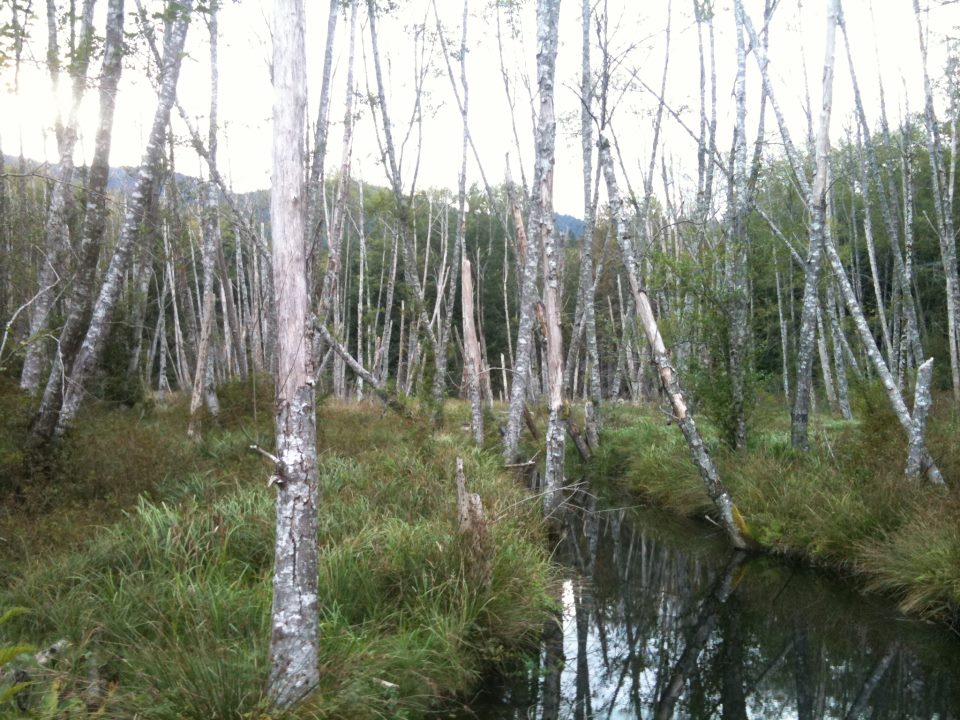Cuir de Russie (Russian Leather)
Cuir de Russie is an age-old theme in perfumery, and has been explored thoroughly by many houses, niche or not. But if you're looking for one that has none of the ubiquitous isobutyl quinoline, not to mention one that actually comes from Russia, Anna Zworykina's interpretation of the theme is both traditional and refreshing.
Traditionally, Cuir de Russie fragrances feature the two key ingredients that give Russian leather is characteristic scent: castoreum (from the Russian - or Canadian beaver) and birch tar.
Castoreum being an animal product, creates a presence of actual leather (or rather, a fur pelt), creating depth and complexity, and a sexy-animalic potency. Technically speaking, castor is what it keeps the perfume getting better in the bottle every year, aging, curing and changing; and at the same time also gives it an astounding longevity on the skin.
Birch tar is a specialty material, prepared in only a handful of villages in Russian and Poland, using an age-old process of pyrolysis. This is a slow burn and suffocation of birch wood, resulting in partial combustion which produces a thick and sticky tar that has moisture-and-rot-resistant properties. It is first and foremost a substance that used in the oiling process of cured leather, which gives the leather the desired water-resistant properties. Traditionally, the leather processed in that manner in Russia would be dyed red (only sometimes in black), and used for making boots suitable for the sub-zero Russian winter. Birch tar use in perfumery is only secondary, owing to its intense smoky odour and leather connotations, sparking the imagination with primordial notions of campfire, hunting and our ancient origins of living in minimal shelters, exposed to the four elements and relying on them for sustenance and survival. Wether if you like the smell of tar or note, it is impossible to stay aloof to this reminder of our origins and connection to fire as a source of power, both physically and spiritually.
It is refreshing to smell the actual raw ingredients used to scent leather in there, namely birch tar as well as wormwood; yet equally refreshing is the use of brighter notes here that gives it a lift and a sense of the outdoors. Leather fragrances, and in particularly the "Russian Leather" types, can easily become overbearing and heavier while worn. In this perfume, there is something really light and bright about it, that prevents it from being weighed down too much. The smokiness paired with lighter and brighter citrus notes and green galbanum and artemisia gives me the feeling of stepping out of a smoky cabin in the middle of the forest in the winter, and breathing in fresh, snowy air filled with coniferous breath.
After the intial outdoorsiness, there is a deep dive into luxurious resins and flowers, most notably labdanum, orange blossom and jasmine. And slowly but surely, the castoreum makes a return, only that now it is more refined and subdued. It reminds me of the old Peau d'Espagne perfume, which was used to scent leather. And this should not be a huge surprise, as it also has castoreum, birch tar and floral bouquet and shares most of the materials used here in the base notes as the main components. You'd get a whiff of vetiver, and sandalwood and patchouli, but the overall feel is rather ambery-balsamic and not smoky anymore. The final dry down, about eight hours in, features a very delicate lace of grey moss, resulting from the dissipation of oakmoss primarily, and hints of vetiver. This brings to mind the frozen forest undergrowth under layers of snow.
Top notes: Galbanum, Lemon, Bergamot, Yuzu, Absinthe
Heart notes: Orange Blossom, Rose de May, Jasmine, Ylang-ylang, Carnation,
Base notes: Birch Tar, Tobacco, Oakmoss, Patchouli, Labdanum, Vetiver, Vanuatu Sandalwood, Ambrette, Castoreum, Ambergris


